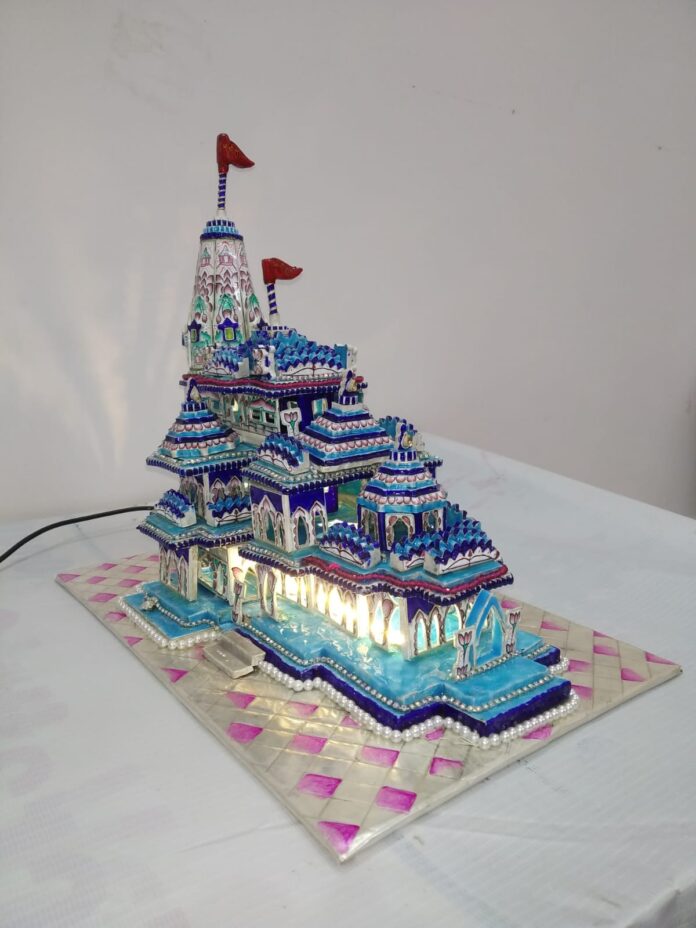It made heroes and discredited villains, hundreds of people martyred for the cause of Mandir

Dharmendra Mishra
The political dust has settled on Ayodhya. The foundation of a new India has been laid. Since December 6, 1992, the imagination of an entire generation has been subsumed by repeated conflict and resolution.
The city of Ram shaped the careers of national leaders and redefined politics. It inspired a legendary yatra that politically legitimatised Hindutva and changed the country’s destiny. Thousands of pages of judgments were written. Jail sentences were awarded.
It made heroes and discredited villains. Hundreds of people were killed in bombs set off by criminal fanatics in Karachi. Devotees died in police firings. All in the name of this ageless city upon the Sarayu River and hardly distinguishable from many other similar towns.
But it’s now a symbol of ancient India’s reincarnation in the modern world. The next few years could see the emergence of global Ayodhya firmly rooted in its past ethos. Will it be the catalyst in making India a Vishwa Guru? It’s time to examine the future of Ayodhya, and how it will play a role in the future of India and the world.
Ancient Capital
Ayodhya was Adipuri or the first city of the world. Its origins go back to Manu. Sri Ram was born more than 60 generations after Manu. Ayodhya has been the capital of many illustrious kings of Suryavansh, or the solar dynasty. In fact, the dynasty gets its different names from some of the kings like Ikshvaku and Raghu. Kalidasa in his magnum opus Raghuvamsam talks about the long line of kings and chooses to name it after Raghu, the great-grandfather of Ram.
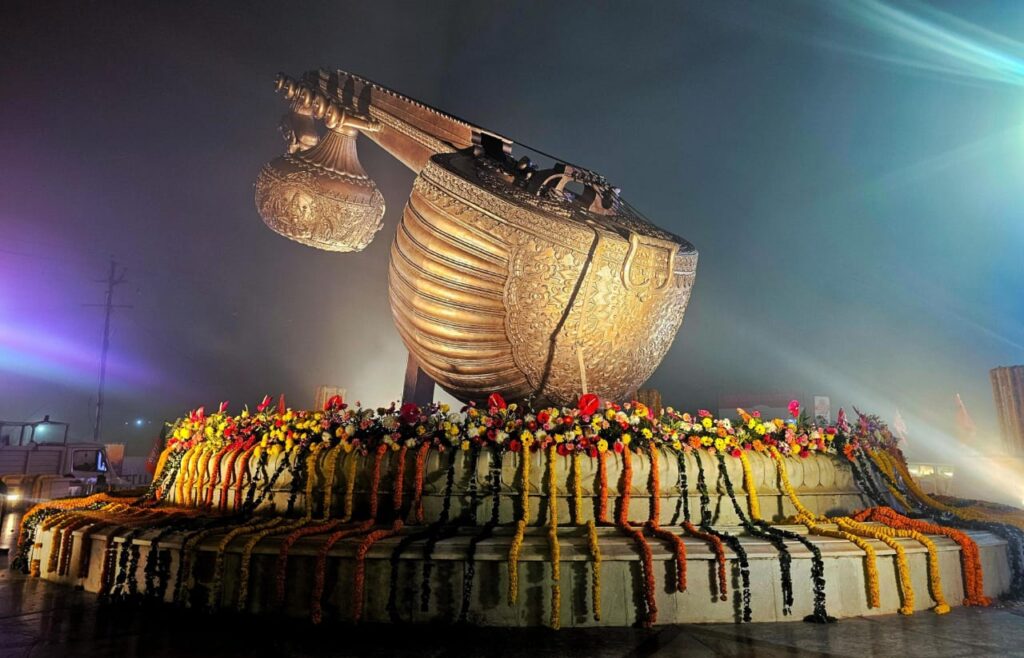
Raghu lent the dynasty his name as Raghukul. Story goes that he won the whole earth, came back to Ayodhya and donated everything. At this point, Rishi Kautsa walks in and demands 14 gold coins as Guru Dakshina. Raghu plans to attack Kubera to get coins but scared of his might Kubera rains gold coins in Ayodhya. Raja Harishchandra, known as Satyavadi for always speaking the truth and keeping his word, was also a king of Ayodhya.
King Bhagiratha, who is believed to have brought down the Ganga from the heavens, belonged to the same dynasty of Ayodhya. Chinese traveller Huan Tsang speaks of Buddhist monasteries in this region, which he identifies as Saket. Gautama Buddha came from the same solar dynasty so his roots are also in Ayodhya.
Five of the 24 Jain Tirthankars were born in the city, including the first Tirthankar Adinath, also known as Rishabh Dev. His temple with a huge idol can be seen in the city. At Brahma Kund, a gurdwara commemorates the visit of Guru Nanak Dev, who also traces his lineage to Sri Ram.
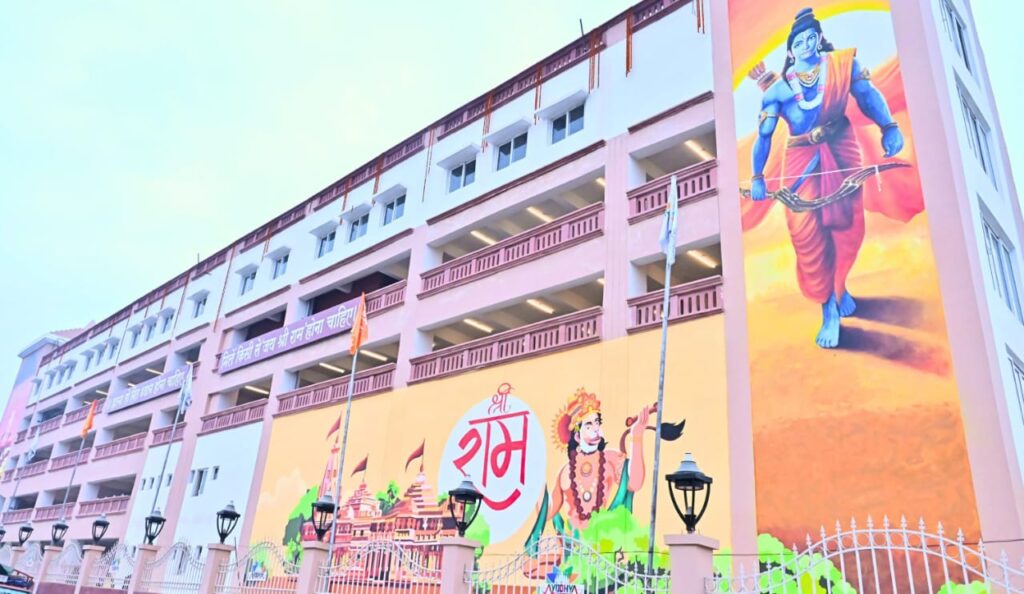
Not just most Indians but half the population of Korea traces its lineage to Ayodhya through Surya Ratna, the princess of Ayodhya who travelled to Korea to marry into the Kara dynasty. Ayodhya is also called Vishnupriya, because it sits on Vishnu’s Chakra. It’s his Adipuri.
The India across which the prince of Ayodhya travelled on the path of probity and justice is no Ram Rajya today. The criminal records of 40 percent of MPs include rape and murder. The land of Sita is unsafe for women; according to latest NCRB data, 3,78,277 crimes against women were reported across the country in 2018 with Uttar Pradesh topping the dismal tally. Twenty Indian women are killed for dowry every day.
One in two Indians has paid a bribe in the land of the Maryada Purushottam. In the country where a royal son bowed to the wishes of his father, over 70 percent of aged people, or every second old citizen, face violence. Ram Rajya has never been as significant as now. The Ganga is dying, like so many other Indian rivers, from pollution, industrial effluents and encroachment: the rotting harvests of development.
It took Uttar Pradesh’s chief minister-monk Yogi Adityanath to save Ayodhya from complete ecological degradation; the city marked a Guinness World record in 2019 when six lakh lamps were lit on the banks of the Sarayu on Diwali eve, just ahead of the Supreme Court ruling that recognised the historical authenticity of Ram Janmabhoomi. The Adityanath government has released `600 crore for the cleaning and beautification of the Sarayu.
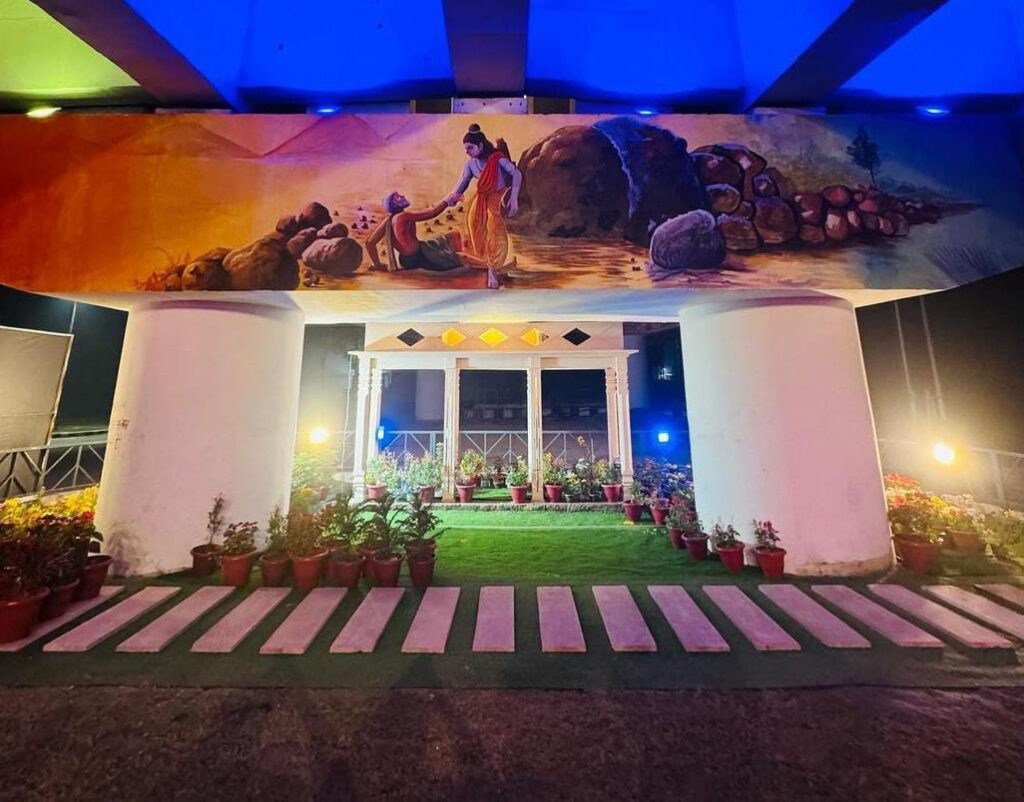
Ram Rajya, to the average Indian, stands for a Utopian Bharat with Ayodhya as its capital. Since the terminology comes from ‘Ram’, it is assumed that Ram waved a magic wand and the world of dharma rose from the ashes of the past. Yet for Tulsidas, Ram Rajya is the perfect metaphor for social harmony and ethical conduct. His definition of Ram Rajya is:
When everyone works as per their dharma and role in the society as described in the scriptures, they all get happiness and live without any fear, grief or disease. A life without fear, sickness and grief is the land of Ram. All wishes come true. In the epic, Ram Rajya covered whole of Bharat.
Tulsidas imbues vocabulary with different meanings; for example, ‘dand’ stands for the yogi’s staff and not punishment. Language is known to reflect the times. As Ayodhya prepares to host visitors from around the world, it hopes to change the meaning of ‘hate’. Its scriptural significance lies in the power of renunciation for the larger good as Rama’s vanavas shows; a prince who keeps his word to his father and follows the righteous path of dharma.
The most popular kings of Ayodhya such as Harishchandra, Raghu or Ram renounced their kingdoms, wealth and their comforts to uphold dharma. Renewed Ayodhya has the power to teach the importance of abandoning entitlement for righteousness.
Politician and writer Pavan K Varma says, “Ram Rajya is a Utopian concept. It is something that is always there in dreams and cannot be realised. So, the temple will definitely not usher in an age of benevolence. However, what it would succeed in doing is erasing to some extent the historical memories in the minds of many Hindus of their temples looted and destroyed at the hands of invading armies. One hopes that there will be some sort of peace between all communities. Ram was Maryada Purushottam. While we cannot have another such time in our present, we can look forward to better days politically.”
Tulsidas envisions an ideal society where people are pure in both thought and action. They lead long, harmonious, respectful lives. They are beautiful, healthy, intelligent and smart. The environment is sacred. Gardens and orchards of Ayodhya are redolent with flowers and fruits. Tree and terraces come alive with birdsong; in Ayodhya, it’s always Basant Ritu. The breeze is pleasingly mild, cool and fragrant.
Distant mountains yield gems. Oceans don’t cause floods, instead they give up their treasures such as pearls and fish. Ram Rajya has a thriving economy. Crops are abundant. The streets flow with honey and milk. The river bank is lined with tulsi groves and temples. Society is clearly defined. The Sarayu has special enclaves for Ayodhya’s inhabitants. The
banks are home to sanyasis. Common citizens can swim in its waters. It quenches the thirst of animals. Kalidasa’s Raghuvamsam mentions water sports on the river. The Ayodhya Mahatmya of Skanda Purana mentions a series of ponds with exact corresponding dimensions girdling the city in the shape of a dhanush (bow) along the perennial River Sarayu.
Such evidence shows that the ancients knew the principles of local water-harvesting, ground water recharging and conservation across India. Ayodhya represents local solutions for local needs. It has the potential to be the ambassador for ‘Vocal for Local’ Mission.
Tulsidas uses the city as the allegory of ecological balance, political responsibility, administrative excellence, city planning and social responsibility. The environment has been degraded by greed and ignorance because the stakeholders are ignorant of the symbiosis between human behaviour and Nature’s needs.
The easy method adopted by governments and organisations is to address environmental problems by treating the symptoms while ignoring the cause. Despite having the latest technology to measure air quality on multiple parameters, our five senses aren’t attuned to the poison gathering in our blood. Only during the occasional visit to distant mountains or a seashore does the realisation come that a healthy environment is a basic quality of life index.
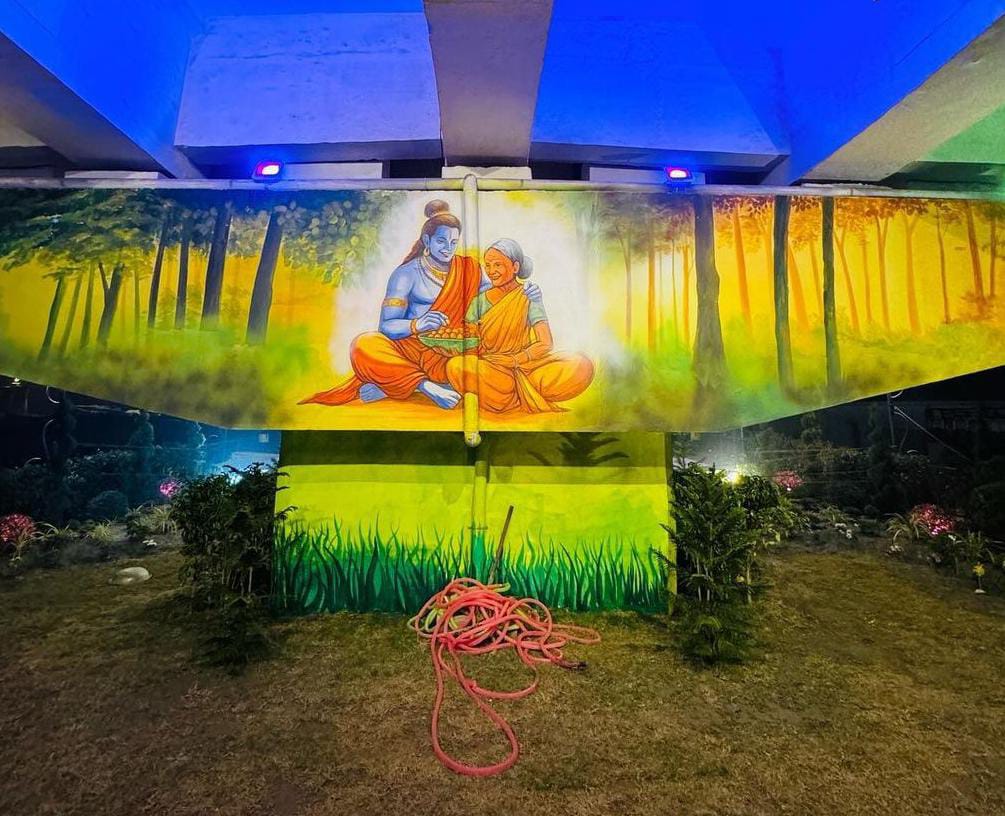
The afflictions of the Yamuna or the Cauvery don’t bring out the protesting poet in us. Ayodhya can be the harbinger of much-required ecological balance as it starts its journey from being a sleepy small town to a self-sustaining global city.
“The Ramayana is the earliest surviving literary expression of our civilisational quest for dharma—righteousness. Rama was an exemplar of dharma: Perfect Man and Righteous King. He suffered in this world for dharma, not political power. After centuries of exile, He is returning to the sacred place that is divinely His. This is a moment of healing and regeneration for our society,” says political scientist and historian Meenakshi Jain.
Tulsidas, though briefly, concludes that good administration lies in observing Indian familial principles. Roles for man and woman are clearly defined as per the mores of the 16th century India when he lived and wrote his classic. The man is in charge of external affairs while the woman is the domestic nurturer. Sri Ram’s governance isn’t arbitrary; instead he seeks the counsel of his brothers to take daily decisions. As both their king and older brother, he guides them, too.
The home is under Sita’s purview. To run the house and minister to the elders, she foregoes the advantage of palace helpers and prefers to take charge personally. Tulsidas lays down a perpetual charter of personal behaviour as exemplified by the royal family—in the current context our politicians and administrators—to be followed by the populace. In Ramcharitmanas, Ram’s story ends with his coronation without mention of Sita being exiled from Ayodhya again.
The beginning of global India began with the Ramayana which travelled to almost every nook and corner of the world. It has been the torch-bearer of Indian culture to the rest of the world for centuries. YP Singh, Director, Ayodhya Research Institute, says, “It is not just a temple spread out in 70 acres, it is the beginning of the cultural renaissance in India that would fuel the cultural tourism, small-scale industries like handicrafts and strengthen the soft power diplomacy of India. The cultural exchange would provide a platform to many local and national artists globally and many global artists will get introduced to India.”
The Ramayana panels on the 9th CE Prambanan Temple complex in Java is proof of that voyage of faith. Thais believe that Ayodhya is their ancient capital and recreated Ayodhya city. Tales of Hanuman have been found in Honduras and China.
The Ramayana has been translated in hundreds of languages, is retold by myriad kinds of performing arts and has been painted in numerous styles. The story of Ram continues to inspire and lay down personal and civilisational goals. It’s the simplicity of Ramayana that gives it the universal reach it enjoys today.
Learning scriptures like the Vedas demands rigorous training. The Upanishads are meant to be imbibed at the Guru’s feet. The Puranas are a treasure trove of interwoven stories. The Mahabharata has multiple sub-plots and leaves to the interpretation too many open-ended, unanswered questions. The Ramayana is simple, yet carries the scriptural template of Bharat.
It is relatable and easy to understand, making it the ideal medium of communication with diverse cultures and communities using a common language. The soft power of Ayodhya can bring people from diverse backgrounds together through the simple message of Ramayana.
Veteran swayamsevak Seshadri Chari says, “The Ayodhya temple construction and the wider sociopolitical support that it is eliciting can herald a phase of new and contemporary interpretation of the concept of Ram Rajya and probably set a new agenda for all the political parties to work towards consensus and all-round development of the nation.”
Modern Ayodhya
The resurrection of Ayodhya’s exalted status and keeping the promise of building the Ram Temple on its Janmabhoomi have brought attention to its future and role in reconnecting India, especially the youth, to their roots.
Congress spokesperson and economist Gaurav Vallabh says, “We as a party have never questioned the importance of Ram. I know that someday I too will visit this grand temple, as will thousands of others. But whether this moment will herald an era of grandeur is doubtful. Ayodhya alone cannot bring about economic stability. This is a historic moment, and the ruling government will do well to take inspiration from Ram’s teachings – once you commit on something, you have to see it through. The government’s promises on good governance have been empty words so far. It is time, they learn from Ram.”
BJP spokesperson Shaina NC calls it a historic moment, which proves that faith triumphs. “Millions of Hindus across the world are looking to Ayodhya today. At the same time, I must commend the Muslims for living up to the ‘unity in diversity’ nature of our country and let bygones be bygones in the hope of a united future,” she adds.
Adityanath has big plans to put Ayodhya on the world map. A new Ram Setu will connect the lakes of Shabri Vatika and Ashoka Vatika. The Sri Ram International Airport is being fast-tracked and Rs 640 crore has already been released for construction. Rs 647 crore has been allotted to build a 251-metre tall Ram statue with a digital museum underneath. This year, the county’s biggest theme park will come up in Ayodhya on 100 acres showing a simulated version of the Ramayana.
Chari says, “Given the sense of achievement, increased awareness and assertiveness coupled with a conducive political atmosphere, Ayodhya could well pave the way for a more peaceful and amicable settlement of other contentious issues concerning Hindus that are deeply politicised and drawn into the vortex of controversies.”
The door has opened for a long-forgotten cultural fountainhead to send India’s cultural gestalt across the oceans to interact with other world cultures. With the consecration of the temple at Ayodhya, another long exile of Ram comes to an end. The next focus will be on Ram Rajya.

